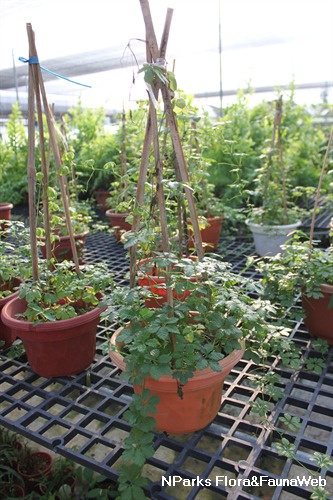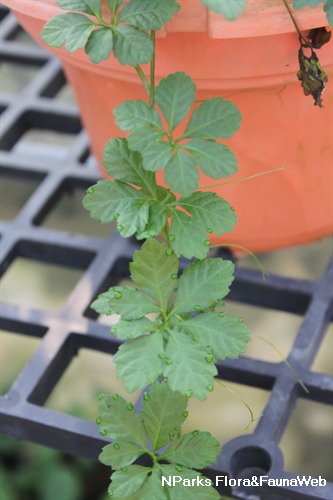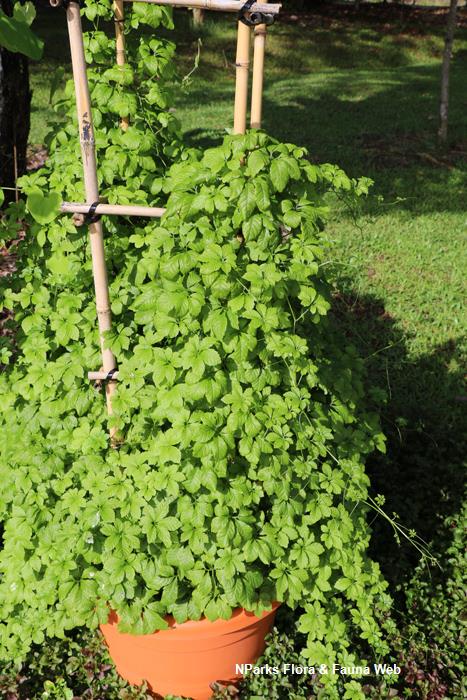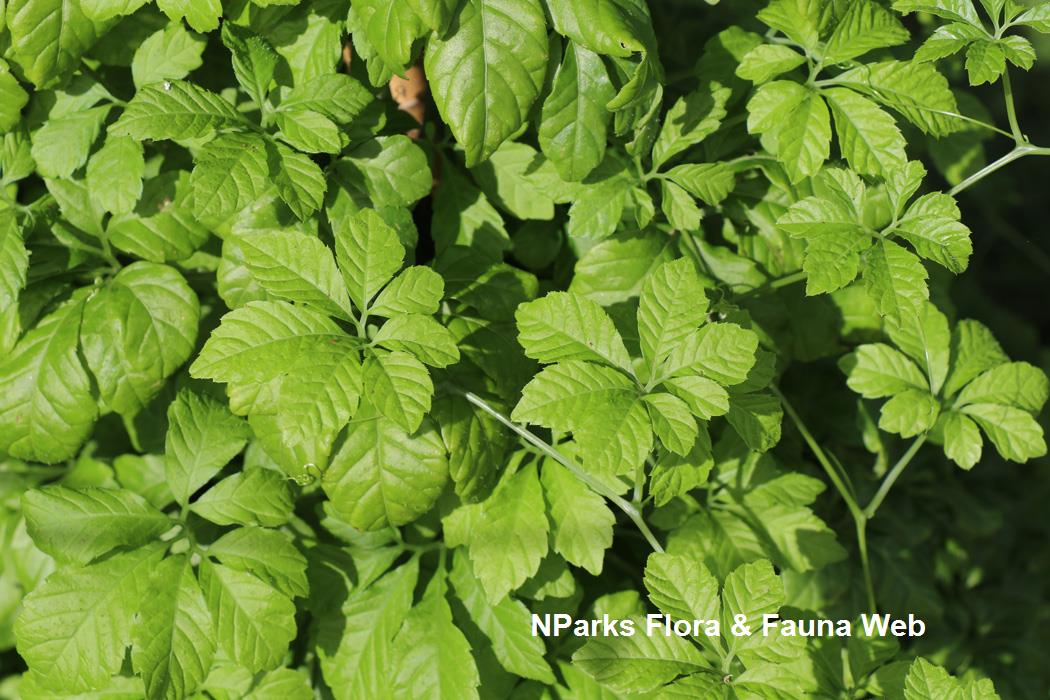
Name
Classifications and Characteristics
| Plant Division | Angiosperms (Flowering Seed Plants) |
|---|---|
| Plant Growth Form | Climber |
| Mode of Nutrition | Autotrophic |
Biogeography
| Native Distribution | China, Japan, South Korea, India, Sri Lanka, Thailand, Laos, Vietnam, Malaysia and Indonesia. |
|---|---|
| Native Habitat | Terrestrial |
| Preferred Climate Zone | Tropical |
| Local Conservation Status | Non-native |
Description and Ethnobotany
| Growth Form | Herbaceous climber that grow to 8 m. |
|---|---|
| Foliage | Leaves are compound and pedate, usually 5–7-foliolate, sometimes 3–9-foliolate. Both upper and lower surfaces are covered with coarse stiff hairs (hispid). Tendrils are very slender (filiform) and forked into two. |
| Stems | Stem is slender, cylindrical and stout. Mostly glabrous or sparsely hairy, stem is beset with fine longitudinal lines or grooves. |
| Flowers | Flower is greenish white with 5 deep lobes. Flowers are borne in the form of panicle, where female flowers have shorter panicle than male flowers. Female and male flowers are found on separate plants. |
| Fruit | Fruit is indehiscent and black when matured. Densely hairy fruit is globose, about 5 – 6 mm wide. Fruit contains 2 brown seeds. Seeds are papillose and ovate-cordate, about 4 mm wide. |
| Habitat | Forest, thickets or mountain slopes. |
| Ethnobotanical Uses | Edible Plant Parts : Edible Leaves Medicinal: Leaves and young stems reportedly can be cooked to make tea. Medical benefits include strengthening immune systems, reducing blood glucose and cholesterol levels. |
Landscaping Features
| Landscape Uses | Trellis / Arbour / Pergola, Suitable for Hanging Baskets |
|---|
Fauna, Pollination and Dispersal
| Pollination Method(s) | Biotic (Fauna) |
|---|
Plant Care and Propagation
| Light Preference | Semi-Shade |
|---|---|
| Water Preference | Moderate Water |
| Rootzone Tolerance | Well-Drained Soils |
| Propagation Method | Seed, Stem Cutting |
Foliar
| Mature Foliage Colour(s) | Green |
|---|---|
| Mature Foliage Texture(s) | Hairy / Hirsute |
| Foliar Type | Compound |
| Foliar Arrangement Along Stem | Alternate |
| Foliar Shape(s) | Non-Palm Foliage |
Non - Foliar and Storage
| Root Type | Underground |
|---|
Floral (Angiosperm)
| Flower & Plant Sexuality | Unisexual Flowers |
Fruit, Seed and Spore
| Mature Fruit Colour(s) | Black |
|---|---|
| Fruit Type | Indehiscent Dry Fruit |
| Seed Quantity Per Fruit | Few (1-5) |
Image Repository
Others
| Master ID | 32331 |
|---|---|
| Species ID | 6739 |
| Flora Disclaimer | The information in this website has been compiled from reliable sources, such as reference works on medicinal plants. It is not a substitute for medical advice or treatment and NParks does not purport to provide any medical advice. Readers should always consult his/her physician before using or consuming a plant for medicinal purposes. |



